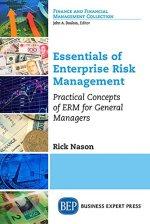Question
(i need help in this case analysis) I have written the case and questions to be answered mandatorily Creating the Need for Change at Peregrine
(i need help in this case analysis)
I have written the case and questions to be answered mandatorily
Creating the Need for Change at Peregrine
In the mid-1990s, General Motors of Canada (GM) spun off many non-profitable and non-core businesses. One of them was Peregrine, a plastics plant, which was sold to a turnaround company that intended to improve operations and then resell it in the future. One day the plant was part of the large GM machine, the next day the workforce was part of a relatively small supplier. Same employees, same union, same management, same plantbut a different owner. In short notice, it became apparent that the plant was losing millions of dollars each month. Their survival was at stake. However, the employees were still wedded to their old personal entitlementsa tradition of life-long employment and job security in exchange for showing up for work each day. They also believed that "Mother GM" would always take care of them. But GM had no intention of providing that level of support.
GM informed the new company that it would be awarded a five-year contract but that at the end of the five years GM may or may not continue to buy parts from them. Peregrine employees didn't believe this, so they continued to operate as usual and didn't pay much attention to the quality of their parts, which was not up to standard. It became clear they were in danger of failing the quality test after the five years.
That's when the senior leaders, at both the management and union levels, turned to us to design an intervention to quickly put an end to the complacency that was impeding change. We designed a series of large group meetings with the staff in waves. The first wave was with the senior people, and then the meetings cascaded down to all employees in medium-sized groups. The meetings started with the union president and the human resources manager standing side by side and declaring that the company was in trouble and needed to rethink its quality. Next, the president outlined what he saw going on in the environment, which included the organization's challenges, opportunities, strengths and weaknesses.
Then an expert from the automotive industry association spoke about key industry developments. He reported that automobile assemblers such as GM were in the process of classifying automotive parts companies in Ontario into three tiers. Tier one included companies that were going to thrive because GM and other assemblers were going to keep on sourcing from them. Tier two companies were going to be the suppliers they would go to for overflow business. And tier three companies were those with substandard quality, high prices or both, and were going to be struck off the supplier list. Next, the financial officer showed several metrics that illustrated the cost of quality, how much money the company was losing every day because of poor quality, and so forth.
But what really made the difference was that the manager from the nearby GM plant, the plant they had been counting on for business into the far future, gave a sobering assessment of the situation. He held up a part and said, "See this part? I pay ten dollars for this part, and the quality stinks. Next year I'm going to pay five dollars, and I want the quality improved. And the year after that I want to pay three dollars, and I want the quality improved by another 100 percent. And if you don't do that, then I'm going to buy from someone else."
This was the first time they had ever heard it from the horse's mouth, their customer. It was the first time the majority believed there was a need for change. They realized they had to pick up their socks and improve their quality. And they did.
| a.Included Introduction and Provided Company Background |
| b. Identified the issues, problems or decision dilemma faced by the organization/ protagonist |
| c. Analyzed the issues, problems or decision dilemma faced by the organization/ protagonist and integrates with the theoretical concepts learnt. |
| d. Provides suitable alternatives related to the issues, problems or decision dilemma faced by the organization/ protagonist. |
| e. Provides appropriate recommendation given the case facts and analysis completed |
| f. Included Conclusion |
Step by Step Solution
There are 3 Steps involved in it
Step: 1

Get Instant Access to Expert-Tailored Solutions
See step-by-step solutions with expert insights and AI powered tools for academic success
Step: 2

Step: 3

Ace Your Homework with AI
Get the answers you need in no time with our AI-driven, step-by-step assistance
Get Started


